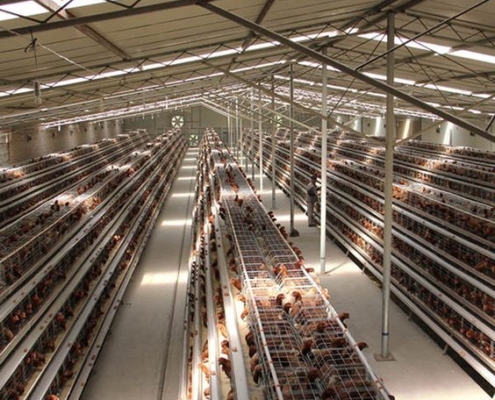Industrial Ceiling Fans For Agricultural
Industrial ceiling fans for agricultural are widely used in many premises. Since farm owners face a challenge in keeping a cool and dry environment in large spaces barns, and farms while reducing energy costs. Then they found industrial ceiling fans or HVLS fans can help in agricultural daily operations and helps to improve the productivity of the animals by ensuring that they are in optimal health.
Why Use Industrial Ceiling Fans For Agricultural Premises?
Industrial ceiling fans or HVLS fans are widely applied in barns, livestock, farm, greenhouses, and other agricultural areas by smart warehouse managers. There are some benefits as follows.
Create Ideal Temperatures For Animals & Grains
Firstly, the most important benefit of industrial ceiling fans is improved air circulation. This helps to disperse the hot air that accumulates near the ceiling and decrease the temperature by 2 to 4 degrees celsius. As a result, it helps to create a more comfortable cool environment for the animals and grains,especially in the summer months.
Low Noise
Additionally, the fans work with quite low noise level, which can help to reduce the noise levels in the livestock facility and can further reduce stress and promote better animal welfare in the barn, which can help to ensure that the animals are comfortable and happy.
Pest Control
Secondly, ceiling fans can also help to reduce the presence of pests, such as flies and mosquitoes, which can be a nuisance in a barn. Industrial ceiling fans create consistent airflow and repel flying insects around the animals and further improve sanitation in the barn.
Create Dry and Healthy Environment
Finally, the improved air circulation generated by HVLS fans also helps to reduce the build-up of dust, ammonia, humidity, and other airborne particles, which can be detrimental to the animal’s health and safety & quality of grains.
Industrial Ceiling Fans VS Industrial Exhaust Fans For Livestock
More Comfortable
HVLS fans with low speed & high air volume create a more comfortable natural breeze-like wind; While industrial exhaust fans create strong airflow for small targeted areas, which is not comfortable for animals in a long-term living.
Save More Energy
Industrial fan ceiling uses fewer units for the same cooling area; HVLS fans are designed to circulate air more efficiently than exhaust fans, providing a more consistent temperature and reducing energy costs.
More Silent
Industrial fans for ceiling or HVLS fans with high air volume and low speed have much lower operation noise levels than that of industrial exhaust fans. HVLS fans are quieter and easier to maintain than industrial exhaust fans and making them an ideal choice for livestock. Additionally, HVLS fans are designed to move air further than traditional fans, reducing the amount of air needed to cool or heat the warehouse.
Cover the Larger Spaces
Industrial ceiling fans use big fan blades with diameter sizes up to 7.2m/24ft, which create cool temperatures in larger spaces of a warehouse; While industrial exhaust fans are designed to create a negative pressure in a limited smaller area, typically to move fumes out, and are not as efficient at cooling a space.
How To Select HVLS Fans For Farm ?
- Consider the size of the livestock farm: The size of the livestock farm will help determine the number, size, and type of HVLS fans needed. Smaller farms may require fewer, smaller fans, while larger farms may require multiple larger fans.
- Determine the airflow requirements: It is important to consider the airflow requirements of the farm. HVLS fans are designed to move large quantities of air, so knowing the airflow requirements of the farm can help determine the size and type of fan needed.
- Consider the environmental conditions: Depending on the environmental conditions of the farm, different types of fans may be necessary to provide adequate cooling and ventilation. Hot and humid farms may require fans that are designed to move more air, while dry and dusty farms may require fan designs that are better suited for filtering the air.
- Establish a budget: Establishing a budget for the HVLS fans is important to ensure that the fans are cost-effective and within the budget of the farm.
- Consider the noise level: HVLS fans can produce noise, so it is important to consider the noise level of the fans before making a purchase. Farms with animals may require quieter fans to avoid disturbing the animals.



